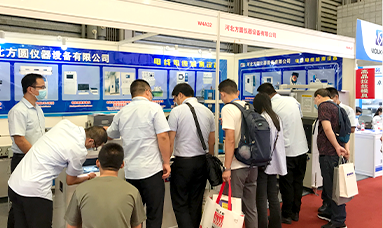cable crosslinking machine
The Importance of Cable Crosslinking Machines in Modern Manufacturing
In today’s high-tech world, the demand for reliable and efficient electrical and telecommunications systems is at an all-time high. Central to the production of these systems is the process of crosslinking, particularly for cables used in various applications. As such, cable crosslinking machines have become integral to modern manufacturing processes. This article will explore the significance of cable crosslinking machines, their operational mechanisms, benefits, and their future in the industry.
Understanding Cable Crosslinking
Crosslinking is a chemical process that enhances the properties of polymers, turning a linear polymer structure into a three-dimensional network. This transformation enhances the material's endurance, temperature resistance, and overall durability, making it particularly well-suited for cable insulation and sheathing materials. In essence, the crosslinked cables can withstand higher temperatures and resist degradation from environmental factors such as moisture, chemicals, and UV radiation.
The Role of Cable Crosslinking Machines
Cable crosslinking machines are specialized equipment designed to perform this crucial chemical process on cables. They utilize various methods, including electron beam irradiation, chemical crosslinking using special agents, and thermal crosslinking techniques. Each method is adapted based on the type of cable being produced, the specific requirements for application, and production volume.
1. Electron Beam Irradiation This method involves directing a stream of high-energy electrons towards the cable material, inducing crosslinking without the need for additional chemicals. It is exceptionally efficient and helps in producing cables with superior mechanical properties.
2. Chemical Crosslinking In this process, crosslinking agents are mixed into the polymer before the cable is extruded. This method allows for greater flexibility in adjusting the degree of crosslinking, making it ideal for specific applications that require unique material properties.
3. Thermal Crosslinking This involves applying heat to the cable after fabrication to initiate the crosslinking process. This method is traditional but effective, particularly for rubber-based materials.
Advantages of Using Cable Crosslinking Machines
cable crosslinking machine

The benefits of utilizing cable crosslinking machines in production lines are numerous
- Enhanced Performance Crosslinked cables exhibit superior electrical and mechanical properties than their non-crosslinked counterparts. They can operate effectively in extreme conditions, which is essential for industries like telecommunications, automotive, and aerospace.
- Improved Durability The crosslinking process grants resistance to heat, chemicals, and moisture, significantly extending the lifespan of cables. This reliability is crucial for maintaining infrastructure and reducing replacement costs.
- Greater Design Flexibility Modern cable crosslinking machines can adapt to various materials and configurations, enabling manufacturers to meet diverse industry needs while maintaining production efficiency.
- Increased Safety The enhanced properties of crosslinked cables also translate into improved safety. They are less likely to fail under stress, thereby reducing the risk of electrical fires and other hazards.
Future Prospects
As technology continues to evolve, the future of cable crosslinking machines appears promising. Advancements in automation and smart technology integration are poised to enhance efficiency further. For instance, utilizing IoT (Internet of Things) technologies can enable real-time monitoring and quality control during the crosslinking process, ensuring that product standards are met consistently.
Moreover, the growing emphasis on sustainability will likely drive innovation in the materials used for crosslinking. Manufacturers may focus on developing eco-friendly chemical agents or exploring bio-based polymer options for producing cables.
Conclusion
In conclusion, cable crosslinking machines play a pivotal role in the manufacturing of modern cables, enhancing their performance, durability, and safety. As industries increasingly rely on advanced electrical systems, the demand for high-quality crosslinked cables is set to grow. Embracing the technological advances in cable crosslinking will not only improve manufacturing efficiency but also fuel innovation in cable design and application. In this dynamic landscape, cable crosslinking machines will undoubtedly remain a cornerstone of manufacturing, enabling us to build a more connected future.
-
Why the Conductor Resistance Constant Temperature Measurement Machine Redefines Precision
NewsJun.20,2025
-
Reliable Testing Starts Here: Why the High Insulation Resistance Measuring Instrument Is a Must-Have
NewsJun.20,2025
-
Flexible Cable Flexing Test Equipment: The Precision Standard for Cable Durability and Performance Testing
NewsJun.20,2025
-
Digital Measurement Projector: Precision Visualization for Modern Manufacturing
NewsJun.20,2025
-
Computer Control Electronic Tensile Tester: Precision and Power for the Modern Metal Industry
NewsJun.20,2025
-
Cable Spark Tester: Your Ultimate Insulation Assurance for Wire and Cable Testing
NewsJun.20,2025
 Copyright © 2025 Hebei Fangyuan Instrument & Equipment Co.,Ltd. All Rights Reserved. Sitemap | Privacy Policy
Copyright © 2025 Hebei Fangyuan Instrument & Equipment Co.,Ltd. All Rights Reserved. Sitemap | Privacy Policy
